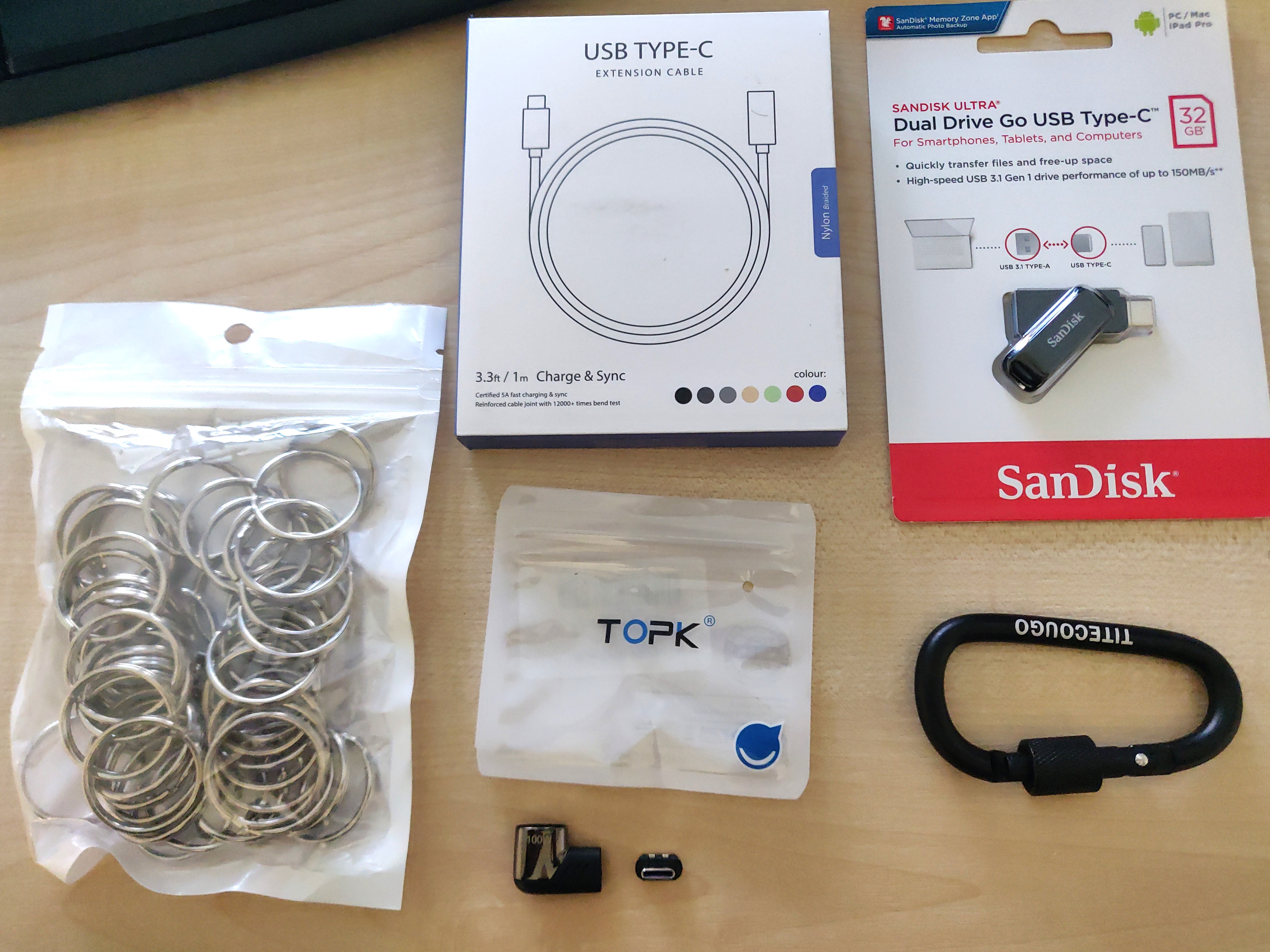Implementing BusKill: shutting down a Debian 11 Bullseye machine when a specific USB device is removed

I saw the BusKill security project some time back, and thought “what a neat idea”.
In essence:
BusKill is a Dead Man Switch triggered when a magnetic breakaway is tripped, severing a USB connection.
This blogpost is about my implementation of it, to shut down a laptop running Debian 11 Bullseye when a specific USB device is removed.
Why have I bothered
This is one of those things that I hope I will never need.
In fact, given that I hardly ever travel at the moment, and the likelihood of someone raiding the house and grabbing my laptop before I’ve been able to hit the “Power off” button seems very low.
Still, I thought that this was a cool concept, and I was keen to give it a try.
Will I use it in practice? I don’t know. Perhaps, if I travel more again.
Do I expect to be mugged for my laptop, or have some hostile nation seize it while I’m working on a train? I very much doubt it. I am very dull.
You need some hardware
You need some common, very easy to find, and not overly expensive, hardware to make this work:
- Carabiner
- Split ring
- USB flash drive
- USB extension cable (in hindsight, I wonder if the 1m cable I have is too long, and if a 0.5m cable would be better. But then there’s probably more chance of tripping it accidentally…)
- Breakaway magnetic USB adapter, to suit your computer

The BusKill docs have some suggestions.
If you do not want to buy the bits for your own setup, BusKill also retails a pre-prepared kit.
I bought the bits from Amazon, and they came to £35. I went for a USB-C solution, because it is easier to find a breakaway magnetic USB-C adapter than a USB-A one.
Setting up the hardware
Easy!
- Carabiner to split ring
- Split ring to USB flash drive
- USB flash drive to USB extension cable
- USB extension cable to breakaway magnetic USB adapter
- Breakaway magnetic USB adapter into computer
The USB flash drive
I am writing this bit because it took me a while to realise that I wasn’t missing something. I’ve also put a pull request in to update the official docs.
You do not need to install anything on the USB device. You don’t need any special software on there, or any config file.
The USB device is just a way of creating something which can be physically removed from the system, giving an event which can be leveraged to trigger commands.
(You could store something on the device, I guess, but just remember that, when you remove it, you’re going to trigger whatever event you’ve configured your system to run. So probably easiest to leave it blank.)
Creating the software trigger
There are (at least) two ways of creating the software trigger, which detects the removal of the USB device and does something.
The easy way is to use the BusKill software client.
The harder way - but the more flexible way - is to use a udev rule.
The BusKill software
The BusKill project has released a GUI application, available for multiple platforms, which makes it very simple indeed.
You download the relevant version of software for your OS, and run it.
By default, it is disarmed, so you click a button to arm it.
Then, when you remove a USB device - right now, that’s any USB device - it locks your screen.
It’s fantastic that there is such a simple, user-friendly, approach. Making this kind of tool accessible is hugely valuable.
For me, it was not going to be an ideal solution, because:
- I don’t like AppImages
- I don’t really want a GUI, although I guess something small in the taskbar would be fine
- I’d need to remember to run it, which is an additional point of failure
- currently, it triggers when any USB device is removed. I don’t use USB devices that often, but I’d probably forget to disarm it before removing a flash drive I was using for some other purpose, and lock my machine. Not the end of the world, since it’s just a screen lock, but a nuisance
- currently, it only locks the screen. There is a Github issue open for offering options, including shut down.
If you like a GUI solution, and you are content with its current limitations, this is available, and that is an excellent thing.
But I wanted something a little different, so I reached for udev.
Triggering BusKill via a udev rule
For me, tying the device in with udev has a couple of advantages:
- there is no need for the app
- it runs automatically, without me having to do anything aside from plugging in the trigger device
- I can easily (well, easily-ish) limit it to a specific device
- I can trigger whatever events I like (such as a shutdown or, if I really wanted, to wipe the LUKS headers on my device, ruining the disk encryption)
Rule specification
I wanted a rule:
- to run when I removed the specific USB device (and only the specific USB device).
- to shut down my computer without any interaction from me, or any delay. But I am fine with the time take for a normal shutdown.
Identifying my specific USB device
Since I want the rule to trigger only when I remove a specific USB device, rather than all USB devices, I needed a way to identify that specific USB device.
To do this, I used:
sudo udevadm monitor --kernel --property --subsystem-match=usb
I plugged in the USB device, and removed it, and looked through the output.
The most obvious variable was PRODUCT. I tried a few USB devices, and this variable changed with each one, so, while I can’t promise it is unique, it is probably good enough for my needs.
With that identifier, I could craft the udev rule
My udev rule
I created a new file at:
/etc/udev/rules.d/5-busKill.rules
and added my rule:
ACTION=="remove", SUBSYSTEM=="usb", ENV{PRODUCT}=="000/11z1/999", RUN+="/usr/sbin/poweroff"
“000/11z1/999” was the value of PRODUCT I extracted using the previous step.
Note that just using poweroff does not work, because whatever executes the udev rule does not know where to find the poweroff command. So use the full path.
(You could add whatever you want here. Perhaps a ping to a specific server, to inform others that your BusKill trigger has been pulled. Or even send an email. But, if the intention is to stop an attacker from gaining access to the files on your device, be careful not to implement additional complexity which slows that down or, worse, causes the shut down to hang.)
I then reloaded the rules:
sudo udevadm control --reload
I tested removing the device, and the computer immediately shut down.
How to use it
It’s very easy to use.
- You clip the carabiner to your belt, or some other part of your clothing/person where it isn’t going to come off easily.
- You plug the USB adapter into your computer.
- (You run the software, and arm it, if you’ve gone down that route. Nothing to do if you’ve used
udev.)
And that’s it.
Don’t forget to either disarm the software before removing your device, or shut down your computer first. Especially if the trigger does something destructive. I guess you’ll only make that mistake once.
There are three reasons why I’m not proposing to use a LUKS-killer, or anything that will wipe or make my data inaccessible:
- my threat model does not justify it, balanced against the inconvenience if it were triggered accidentally
- I might trigger it accidentally, and that would be a pain
- someone else might trigger it, accidentally or on purpose, and that would be a pain
Donating to the BusKill project
Although I build the device using bits I sourced myself, and although I’m not using the BusKill GUI, I felt it was important to support the project. After all, without the project, I would not have thought of doing this.
So I made a donation.
You may also like:
- Fixing 'tee: command not found' on Debian 11 Bullseye
- Installing Twitter client cawbird from the official Debian 11 Bullseye repo
- Installing Debian 11 on a Microsoft Surface Go: secure boot, mokutil, Wi-Fi, and libinih1
- WireGuard VPN plugin for NetworkManager in GNOME 3 on Debian 11 Bullseye
- Adding music from an ssh-accessible remote server to an Android phone via Debian 11
- PineTab running Mobian and GNOME: an iPad replacement?
- Setting up a Ledger Nano X with Debian 11
- Installing Mobian with full disk encryption on PinePhone
- Debian 11 and printing on a Samsung ML-2525W
- Virtualising an existing macOS installation for VirtualBox on Debian 11
- Wi-Fi on a 2012 Mac Mini, running Debian 11
- Handwriting, and annotating PDFs: a stylus on Debian 10 on Surface Pro 6 compared with an iPad
- Removing the default games in GNOME 3 on Debian 10
- Debian 10 on a Samsung NC10
- Supervision is not the same as total surveillance